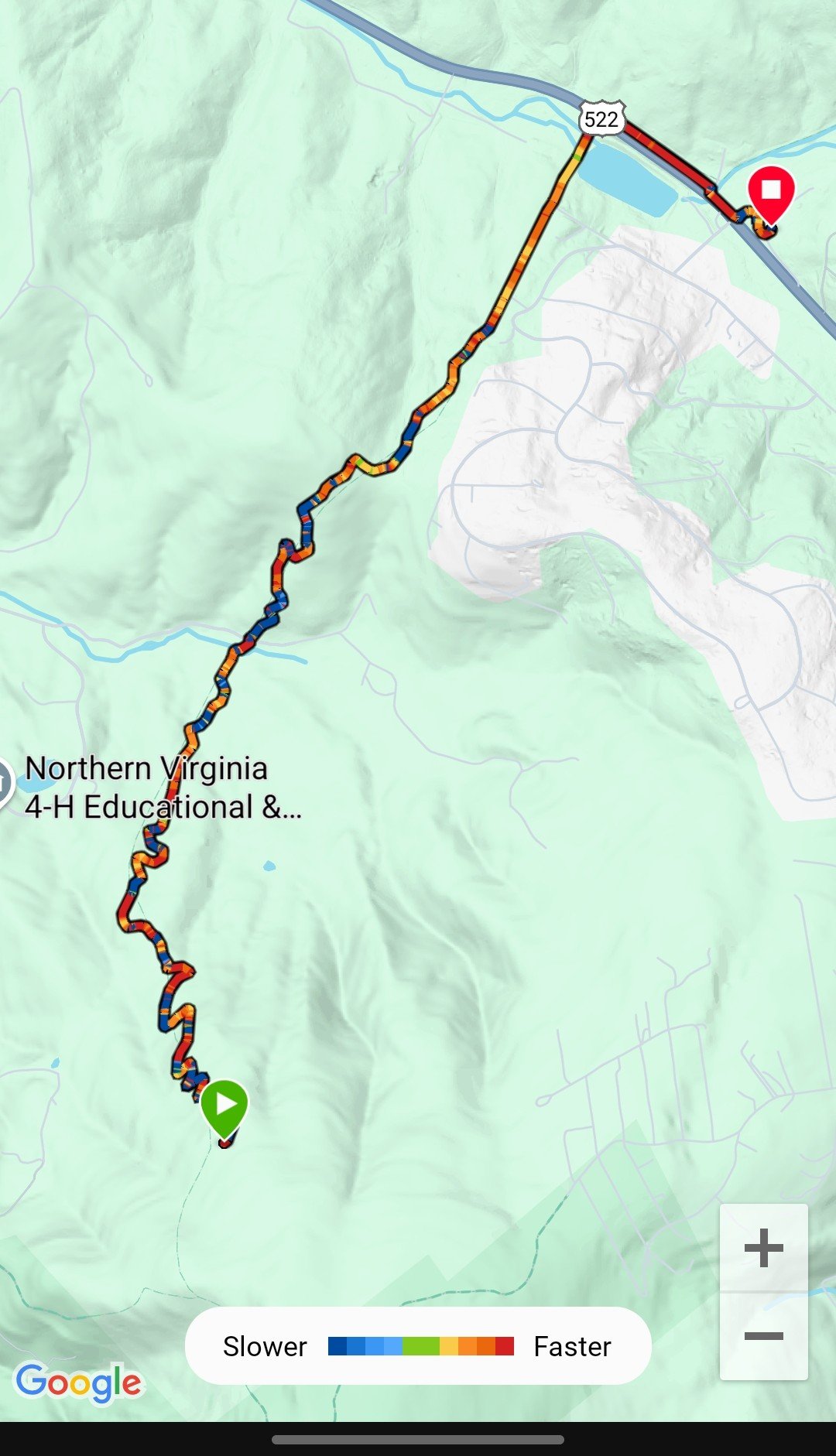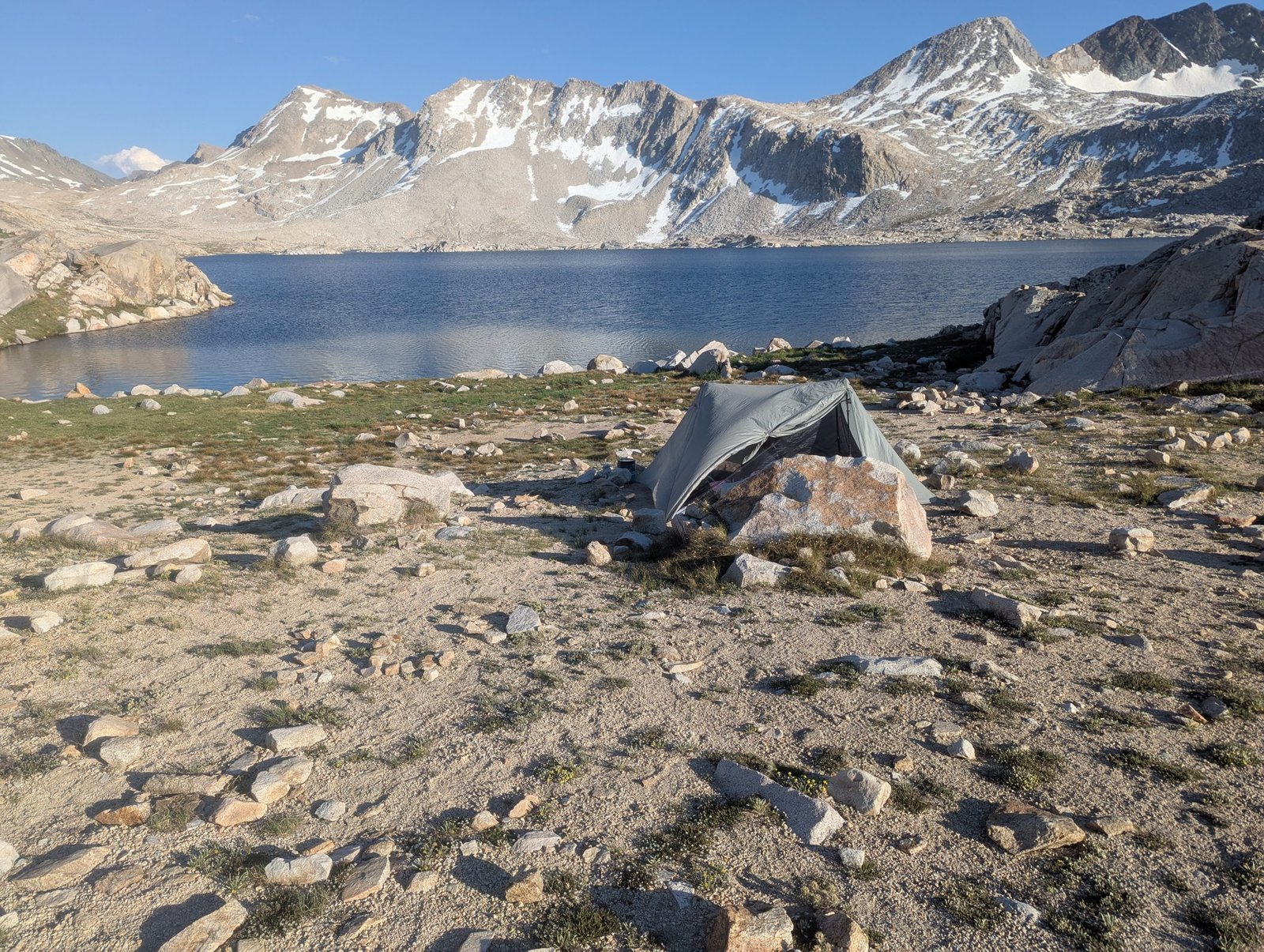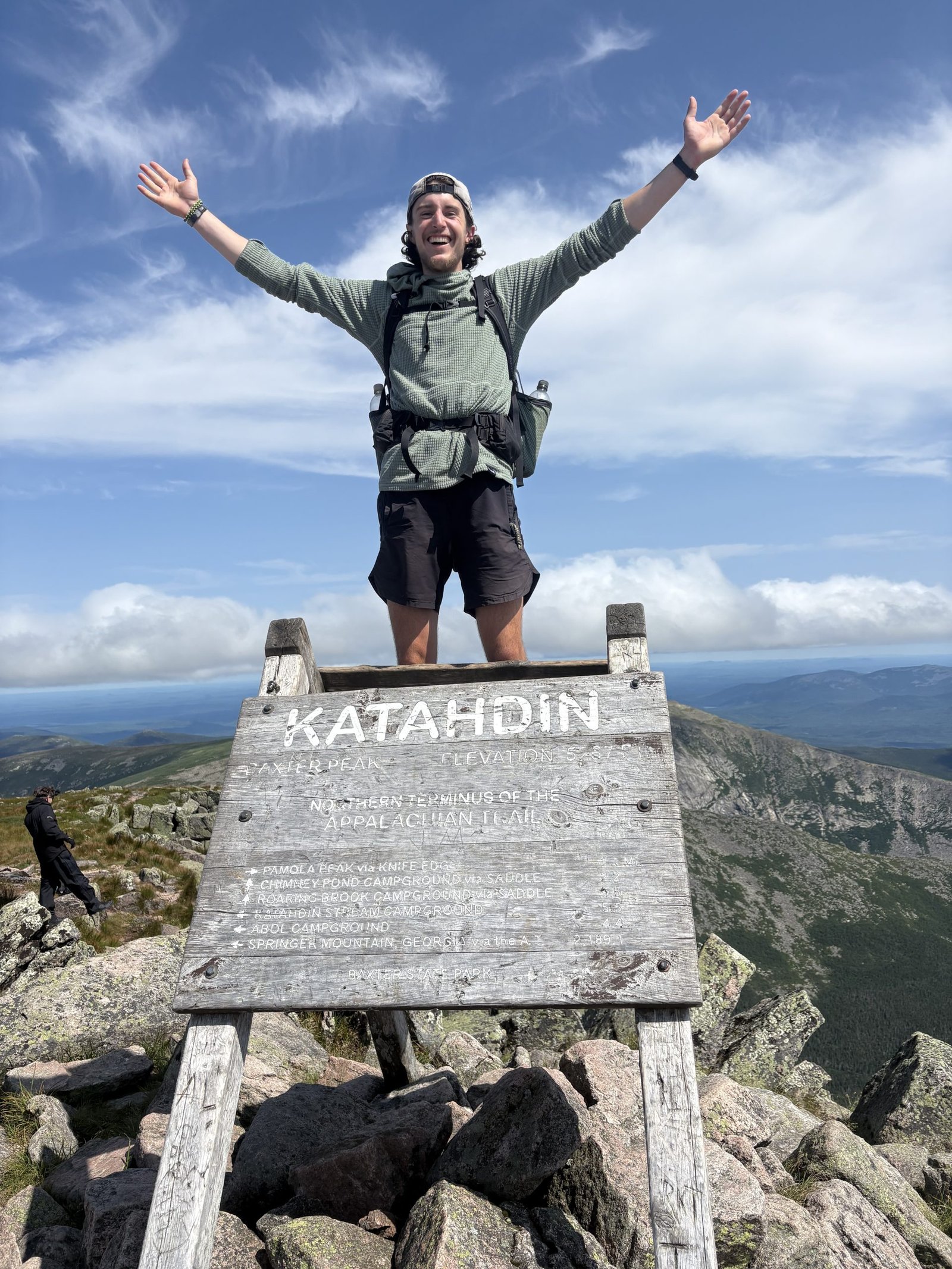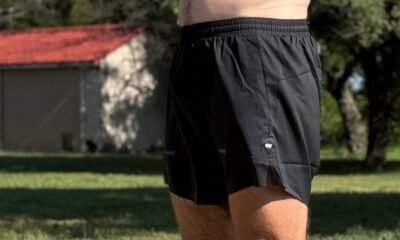Destinations & Things To Do
Rivendell Bikes Crafts Rear Derailleur of the Century

In May, I went for a ride on the Mount Tam trails in Marin County, California, with Grant Petersen, the founder and owner of Rivendell Bicycle Works, and his buddy Dan Leto. It was a warm and sunny Sunday morning. As we were unloading the bikes from Dan’s car at the trailhead (and Grant was working on a flat), an older gentleman in an Audi convertible pulled over to admire them. Having seen the 2006 documentary Klunkers, he understood that mountain biking had been born more or less exactly where we were standing.
He then asked: “Are you guys reenactors?”
It was funny to us, since our bikes and our clothing were essentially new, but it also wasn’t surprising given the current state of mountain biking and cycling. We were riding steel bicycles with leather saddles and without suspension, and while our clothes were perfectly normal for three guys hanging out together on a Sunday, they were abnormal in the context of contemporary bicycling where roadies dress like speed skaters and mountain bikers dress like hockey goalies. Certainly to a non-cyclist, we far more closely resembled the people in Klunkers than the people you’ll typically find riding the roads and trails around Marin County today.
Normal Bikes for Normal People in Normal Clothes
A knowledgeable cyclist can tell the difference between a modern Rivendell and a vintage klunker at a glance. But even among them, there’s a general sense that if you choose a bike like this, you’re willfully and obstinately slowing yourself down, dropping anchor in the past, and refusing to change with the times. Bikes are supposed to get faster and easier. They’re supposed to take you deeper into the landscape and over increasingly challenging terrain with less effort. If you’re having trouble getting up a tricky climb without putting a foot down, or you’re not breaking Strava records on the descent, it’s because your equipment is inadequate—you’re “underbiking,” in the current parlance.
Of course, Rivendells are not designed for the body armor set or the rider looking to push the absolute limits of speed and physics. You don’t chug a Red Bull before you hop on your Rivendell, but you might sip a kombucha afterward. Yet these are not relics that are frozen in time, nor are they replica klunkers made for the cycling equivalent of Civil War reenactors. Rather, they’re the natural evolution of those early two-wheelers if they hadn’t become the borderline motocross bikes you see out on the trails today. (Complete with motors, increasingly.)
They’re stable, strong, comfortable, competent, and capable bicycles, the designs of which Rivendell has refined and continues to refine. The mountain bike you rode 40 years ago did not have the ample tire clearance of Rivendell’s trail bike, the Clem Smith, Jr., or the long wheelbase that keeps the bike planted on rough terrain (whether you’re climbing or descending), or the low-slung top tube to facilitate dismounts, and remounts both planned and unplanned. (If you think a step-thru frame makes it a “girl’s bike,” you need to get with it.) Your old mountain bike cleared 2.1” tires if you were lucky, it had tiny wheels, a short piece of pipe for a handlebar, and a low-slung cockpit, and on challenging downhill sections it did its best to send you over the bars.
A company that makes normal bikes for normal people in normal clothes who want to enjoy the outdoors in a completely normal way faces certain challenges in a cycling industry that considers this form of normality abnormal, though. One of these is sourcing drivetrain components. The dominant suppliers of bicycle shifting systems are Shimano and SRAM, and while both continue to make mechanical drivetrains, they’re clearly focused on a wireless, electronic future. At the high end, their offerings have been almost exclusively battery-powered for years, but as the technology continues to make its way onto lower-priced bicycles, electronic shifting becomes increasingly ubiquitous. As a result, plenty of bike companies now offer frames that are not compatible with mechanical shifting at all.
Rivendell’s ‘Low Normal’ Derailleur
The mechanical systems these companies produce are now often designed around wide-range, single-ring drivetrains. Such systems have become popular because they’re both simple and robust. However, the individual components are generally not suitable as replacement parts for older drivetrains, or for riders who still prefer more traditional double or even triple chainring setups as opposed to clicking their way up and down massive 12-speed 10-50t cassettes. Front-shifting is going extinct, which is lamentable, because on undulating terrain sometimes nothing beats the simplicity of dropping into the small ring for the climb and then shifting back onto the big one for the descent.
Rivendell has long seen where things are going. Rather than design their frames in response to what the big drivetrain manufacturers are producing, they’ve been designing and selling their own drivetrain components, drawing inspiration from the past but improving and refining them for today’s bikes and today’s riders. Rivendell’s Silver friction shifter is an update of the SunTour Power Ratchet, which was one of the finest shifters ever made until Shimano introduced SIS (“Shimano Indexed Shifting”) in 1984 and eventually put SunTour out of business.
Friction shifting unlocks an entire world of component compatibility, allowing you to mix cassettes and shifters and derailleurs from different manufacturers across many decades. The Silver shifter can be mounted on the downtube or the bar end or pretty much anywhere else. It feels like winding an expensive watch thanks to the extremely fine ratchet, and it will let you shift pretty much any derailleur across as many or as few cogs as you want.
Now, Rivendell is getting ready to offer its own Silver-branded rear derailleur, the OM-1. (Actually it will be a “derailer,” as Rivendell eschews the unnecessary letters of the French spelling. However, after all these years, I just can’t stop myself from typing them, so it will still be “derailleur” in this story going forward.)
A small bike company like Rivendell really has no business designing and selling a derailleur. A frame or a tire or a handlebar or a line of Scottish cotton bike bags or even a ratcheting shifter is one thing, but the rear derailleur (even a budget one) is one of the most complicated contraptions on your bike—a robust yet highly sensitive articulating arm consisting of a bunch of plates and springs and rivets and pulleys that must all fit together with perfect precision. You certainly don’t need to be an engineer to install or adjust a derailleur, but if you’ve ever tried to disassemble one, you understand how intricate it is, and if you then tried to put it back together again, your brain probably exploded along with the derailleur itself. No bicycle company in its right mind wants to deal with the expense and sheer hassle of designing a derailleur. It’s a part you buy from one of the big companies and bolt onto the bike. It’s like designing your own kitchen faucet instead of picking one up from Home Depot.
But Rivendell is not a normal bike company and this is no normal derailleur—or rather it is, but it’s low-normal, which is the exact opposite of pretty much every derailleur out there.
Rivendell’s OM-1 rear derailleur will be available in mid-September, the company states.
Here’s how Rivendell explains it on its packaging:
RIVENDELL’S S!LVER OM-1, BETTER BECAUSE IT’S BACKWARDS
Most rear derailers are “high-normal” (HN) style: With no cable tension,
the spring pulls the pulleys to the HIGH gear (small cog). The spring in
a “low-normal” (LN) derailer pulls the chain to LOW gear. Our S!LVER OM-1
is this type. The OM means “opposite movement,” which works better,
linguistically, than “low-normal,” since “low-normal” isn’t normal. All front
derailers are LN, so when you add a LN rear, the left and right shifters
work in mirror image; the same direction or the same levers for high or low
gears. “Ghost shifts” and the rare broken or slipped cable default you to
lower gears, a blessing on steep hills or in the boonies. LN shifting takes
ten shifts to get used to, twenty shifts to love, and there isn’t one drawback.
The OM-1 is a Beacon of Hope
Just as Rivendell didn’t invent the ratcheting friction shifter, they also didn’t invent the low-normal derailleur. In recent cycling history, the most prominent examples in the marketplace were Shimano’s “RapidRise” derailleurs of the late ‘90s and early aughts. RapidRise was aimed primarily at mountain bikers, who ultimately rejected it, even though it worked perfectly well. Not only was it different and therefore weird, but Shimano eventually paired it with one of its worst mountain bike shifters ever, the hated “Dual Control Lever” system, whereby you moved the entire brake lever to shift—just like their road shifters, only horizontal—and so people came to associate the two. Between the weird derailleurs and the floppy shifters, people eventually wrote RapidRise off as just another Shimano gimmick, like BioPace eccentric chainrings or their short-lived Airlines air-powered shifting system.
But as it turns out, low-normal derailleurs pair brilliantly with friction shifters, and so Rivendell has been stockpiling them for years. Like everyone else, I’d always dismissed RapidRise derailleurs despite not having tried them myself, but in 2020 Grant sent me a 9-speed era RapidRise XTR M950, which I installed on my A. Homer Hilsen, already equipped with Silver friction shifters. Because the spring moves the derailleur inboard instead of outboard when you release the cable, downshifts were noticeably smoother and easier. More significantly, my bar end shifter was well out of the way of my knee on climbs, because with a low-normal system both shifters are pointing straight down instead of sticking straight out as they do with high-normal derailleurs. I’ve ridden everything from Di2 to mechanical Campagnolo Super Record, but in terms of sheer smoothness, the drivetrain on my Homer was now perhaps the finest I’d ever used.
Rivendell’s path to its own production low-normal derailleur was as undulating and intermittently rocky as the Mount Tam trails we rode that spring day when we were mistaken for historical reenactors. Bicycle frame and component manufacturing has largely shifted overseas, but derailleur manufacturing has pretty much always happened overseas. There’s no Great American Derailleur Company that shifted (that’s a pun) its manufacturing to China and left a small town destitute, and with certain exceptions, such as the rare and exotic Paul Powerglide derailleur of the mid-’90s, quality derailleurs have pretty much always come from either Europe or Asia. So tariffs or no tariffs, while a bike company can still have something like a frame manufactured domestically if they really want to, there’s pretty much no way to get someone in the U.S. to build you a derailleur. And even having one made overseas in the factories where they already make derailleurs is a challenge, because no bike company in its right mind designs its own derailleurs. But Rivendell wanted low-normal derailleurs that work great with friction shifters and double and triple cranks (not to mention silver and smooth instead of black and chunky like most modern derailleurs), and they didn’t want to keep settling for new old stock or existing production derailleurs that weren’t quite what they wanted, so they took it upon themselves to make it happen, time and expense be darned.
In 2020, around when Grant sent me that XTR RapidRise, Rivendell engaged an engineer and bike industry veteran, Dan Falvey, to work with them on designing a low-normal derailleur. This eventually yielded a beautiful, wholly original design and a functioning prototype that was prohibitively expensive to produce. (The cycling world does not need another $900 rear derailleur, which is about what the latest Campagnolo Super Record electronic rear derailleur costs; in fact, the cycling world arguably doesn’t need any $900 rear derailleurs.) So the OM-1 that will be available for purchase will cost $150, and it integrates the low-normal action integrated into a design from their manufacturer that is far easier to produce, yet will still look far better on a lugged steel bicycle than something like a Shimano CUES—no offense to Shimano CUES, but it ain’t exactly pretty.
By the time I received a Silver OM-1 prototype (around the time I met Grant and Dan for the ride on Mount Tam) I’d been using Silver friction shifters and low-normal derailleurs on two of my bikes, so I already knew what to expect when I installed it on my Platypus, which also used Silver shifters but still had a high-normal derailleur.
When downshifting with the OM-1, the chain flew right up the cassette with the flick of the lever, and because of the low-normal action, front and rear shifting actions now matched. With the Silver shifters in under-the-bar-thumbie mode, that meant forward to downshift, and back to upshift, on both the front and the rear.
Platypus uses its share of chunky black mountain bike components, so it doesn’t require a classically elegant derailleur with smooth contours and a silver finish (plus its grimy drivetrain is an affront to said finish), but it certainly doesn’t hurt, and aesthetically it’s a component that would look at home on anything from a vintage road bike to a modern gravel bike, even (gasp!) a carbon one.
If all this talk of low-normal derailleurs and friction shifting makes you scoff, rest assured that nobody is trying to take away your suspension and your dropper post and your disc brakes and your wireless drivetrain. You’re safe. The mainstream bike industry is committed to these things, and to you. The Silver OM-1 is for the older riders who feel left behind, or for the younger riders who want to try something new, or really for anyone who wants an utterly simple and smooth-shifting bicycle that doesn’t require firmware updates and is compatible with decades upon decades’ worth of components. It also represents the first complete dedicated friction drivetrain in probably 40 years, it brings meaningful improvements to it (ratcheting shifting and low-normal action), and if you’re friction-curious and decide to try it out, you’ll find it to be the very pinnacle of refinement. And the reason you’ll still be able to buy all this stuff new in 2025 like a civilized person instead of scrounging for used parts on eBay is because a small bike company took on a huge project that makes little financial sense, all for the love of cycling.
So yes, the TLDR of it all is that Rivendell has made a derailleur that works backwards. But it’s more than that, and as our bikes go electronic like everything else, the OM-1 is a low-normal beacon of hope for those of us who don’t want to add our bikes to the increasingly long list of Stuff That Needs To Be Charged. Rivendell is fighting for the future of the mechanical bicycle so you don’t have to.
Destinations & Things To Do
Day 81: From Dank Swamp to Historic Home

- Tom Floyd Wayside (969.5) to Mountain Home B & B (972.5)
- 500 feet ascent, 1430 feet descent
The feeling of completing the Shennandoah settled in and our energy slowly washed out with the tide of excitement. We only had 3.4 miles to walk but that felt far.
Sometimes completion leaves you with initial ebullience and then trips you like a rock. It is not dissimilar to being ravenous, and cramming in a sugary, salty, hyperpalatable meal. The olfactory and oral satisfaction are acute. Then the tummy rolls and the blood sugar drops.
Hiking Like a Variable Spred Drill
Our speed and competence at hiking was all over the place today. Fast, slow and everything between. My fitness watch map was actually hilarious.
I usually lead when we hike because I am a steady pacer. The Historian walks like he talks, have a thought and shoot ahead. Then, slow down to consider the next thought and once organized, zoom ahead. Multitasking-R-Not-Us.
I am more like a metronome. I may slow down or speed up based on terrain, but the pace is usually like clockwork. Lord help me, I often count steps or sing music in my head to set a tempo.
Not today. My pace was all over the place. I must say, The Historian was very tolerant of his hiking partner this morning.
Dank Hiking
Virginia has a lot of swampy, dark areas that have a dank, dismal feeling. We experienced that in the lower areas of the middle of Virginia where the laurels and water were the primary features. The Dismal Falls area was prototypical.
Today there were no laurel bushes to distract us. We started the day with a short rocky downhill but quickly transitioned onto swamp. It was black, marshy, and a little like a scary movie.
Adding to the horror-movie vibe was an old, 7 foot tall chain link fence. It was in disrepair and in some places had openings in the links.
We debated if the fence was to keep things in, or keep things out. I had the feeling I needed to keep an eye on everything in case some zombies or space aliens darted by.
Mildly Aggressive Signage
Layering onto the geography and old chain link fence, were a signs warning hikers to stay on the trail. These began yesterday after leaving the Park.
Realistically, we imagined there had been some some rude hiker use and maybe conflict between hikers and local land owners. In the context of our mood and the fence and geography, they felt like trailside trolls demanding a payment to cross the land.
Long Down
After the murk and the zombie woods, we emerged at the edge of a field. The fence continued on the west side. The trail surface was dirt with a lot of clay in it. Overlying the narrow clay trail was tall wet grass.
We were grateful it had not rained much recently. Had it been wet, we imagines slipping at the top if the fenceline and sliding a mile down the slippery, straight, downhill trail.
On and on it went in its arrow straight pattern. Near the bottom, houses were visible on the non-fence side. There were fences and barriers that suggested the homeowners were not disposed to appreciate the hikers.
We wondered aloud what type of rude hikers had triggered this need for such strong boundaries. It made us sad to contemplate.
The Highway
We crossed Sloan creek with a nod to our resupply package maven whose name includes Sloan.
After the creek, we emerged onto the busy highway, Virginia 522. To our right was a small trail parking lot. To the left, a bus stop post with the bys schedule to Front Royal. Even though we were not going to Frobt Royal today, it was cool to think we could ride the city bus from the trail to town.
We waited for a lull on the traffic. Grasping our poles firmly, we scurried across the highway as fast as we could and still not trip over the yellow line.
Once on the north side of the crossing, we breathed a sigh of relief. We were just .3 a mile from our goal, the Mountain Home B & B.
The trail follows the highway for that 1/3 of a mile, but with a nice, thick strip of trees between the highway amd the trail. The zooming car sounds wete present, but the visual cues were peaceful trail.
Mountain Home B & B
We reached Gate 7, as directed and rather than turning left to follow the trail north, stepped back toward the road and up a block to enter our hostel home for the next 24 hours.
We felt welcomed before we even got to the building. There was a sign supporting the local library.
Once to the back patio, we were welcomed with a large glass of homemade lemonade with treats. The ice clicked in the glasses in an engaging way.
Inside
When we got inside, we were instructed to place our dirty packs inside large contractor bags to transport them on to our room. It was a clever idea.
We were assigned the Game Room. It included an antique foosball table and stacks of vintage board games. We did not play the games, but it was a fun theme.
Hanging Out
After a gratifying shower and finding loaner clothes, we spent the rest of the day hanging out with other hikers. The dining room was a hospitable place with two large dining tables.
When dinnertime came, everyone wanted delivered food. It was hot and wet outside. No one delivered so the hosts kindly offered to shuttle some of us to town to fetch a large takeout order we had collectively placed.
All of us enjoyed refullimg our tummies with Thai food. We had also selected our food preferences for the included breakfast for tomorrow. One meal consumed and the next meal planned, we headed off to refuel our bodies with sleep and dream od eating again soon.
This website contains affiliate links, which means The Trek may receive a percentage of any product or service you purchase using the links in the articles or advertisements. The buyer pays the same price as they would otherwise, and your purchase helps to support The Trek’s ongoing goal to serve you quality backpacking advice and information. Thanks for your support!
To learn more, please visit the About This Site page.
Destinations & Things To Do
Days 13 thru 16 – Lakes and Creeks

Day 13 – Wanda Lake to Tentsite on Piute Creek – 15.3 miles
Last night, during my bathroom break, the near full moon turned the baren landscape into a moon scape. It was both very beautiful and kind of erie. I did not carry my headlamp because it was so light out. Walking back I realized that many of the boulders looked just like our tent, especially in the moonlight. Fortunately I knew the tent was between me and the lake, so I just headed towards the lake and one of the boulders magically turned into our tent.
Discussing this with Meriwether today, we wondered if anyone ever crawled into the wrong tent. Some of the tentsites will accommodate a bunch of tents. There are at least four other tents just like ours very close to where we are set up tonight.
The hike today was 99.9 percent downhill. The uphill wasn’t even really uphill. I don’t think I have ever spent an entire day backpacking going downhill. The grade was very gentle, easy on the knees. We made really good time and took some great breaks.
My favorite break was at lunch, right after we crossed Evolution Creek. This is a big creek that can be dangerous to cross. There is an alternate trail that crosses the creek in a much easier place. We did NOT take the alternate. There is a very deep spot in the creek where the trail crosses. I found that to be a great place to cool off.
We only have a few miles to Muir Trail Ranch, our next resupply. They do not offer any other amenities to hikers, so we will probably grab our food, charge our phones, and keep moving. That is, unless the hot springs are very inviting or they offer us a discount on a hut for the night.
Happy Trails!
Day 14 – Tentsite on Piute Creek to Tentsite on Marie Lake – 11.6 miles
We got to see all our good trail friends today. Becca and Simone were at MTR when we arrived. They introduced us to their friend 2 Puffs before heading out. I imagine they will be about 3 or 4 hours ahead of us tonight. Peter and Laura showed up after we had sorted through our resupply. They either got enamored with the hot springs and stayed or are likely 2 hours behind us.
The roar of Piute Creek drowned out any noise from our neighbor campers and lulled me into a deep sleep. There would be no midnight bathroom break. I woke feeling great and ready to go.
The plan for today is to get to MTR for our resupply and decide whether to spend the night there or press on. MTR has cabins and tents that can be rented for $250 per person with a two night minimum. The price does include dinner and breakfast.
The sign on the store said “No Vacancy”, I guess we are moving on. Our resupply bucket was there and intact. We did a bit of trading and discarding, recharged our electronics, washed our hands with soap, weighed our packs, and set off. My pack weighed in at 31 pounds, 2 pounds heavier than Meriwether’s. Please note that I carry the tent and cook gear.
Plan 2 was to head to the lake just before Seldon Pass. On the way to the lake a swarm of flies converged on Meriwether. She wasn’t interested in stopping until the flies went away. So we hiked passed the lake and over Seldon Pass to Lake Marie. Except for the massive cloud just in the distance, this site is wonderful. There are mountains close and in the distance. The lake is rippling blue green and pretty warm.
We are in striking distance of VVR. If we get to the turn off in time to catch the ferry, there is a chance we will go to the resort. We are both very interested in a cold, fizzy drink. There are also showers, laundry, and a cafe at the resort. My shirt and pants are turning white from the salt stains.
Happy Trails!
Day 15 – Tentsite on Marie Lake to Tentsite on Mono Creek – 14.9 miles 122.5
The biggest mistake I have made on this trip is to pack the exact same meal for dinner. Yesterday I snagged some packaged sweet and spicy tuna from the hiker box at MTR. I ate it for lunch on a soft tortilla. It was so good. Last night for dinner, tonight for dinner, every night for dinner I have been eating ramen (the $1 package), spam, and peanut butter. It is one of my favorite backpacking meals. Well, it used to be. At most there will be 9 more dinners of it, but I have a plan to reduce that number.
We made it to the intersection with VVR in plenty of time to make the ferry. We decided, however, to press on. We should be able to get to Red’s Meadow in two days. Red’s is closer to the trail, we have a resupply bucket there, and it has pretty much the same amenities as VVR.
The hike today was almost all in the woods. Occasionally we would get a glimpse of the mountains. Mostly we got to see some majestic trees. I think they are Sequoias, but I am no tree expert.
We also had to content with swarms of mozzies. For a couple miles I thought there was a hummingbird on each shoulder. Every now and then I could feel their claws punch my skin. One of the pinches was particularly hard, I glanced over and realized it was a massive mozzies. I squashed it and coated my shirt with blood.
Tomorrow we tackle Silver Pass. It is just under 4 miles away and I am hoping it will be a cool, bug free, experience. We will try to set us up to get to Red’s early in the afternoon the next day. I am looking forward to something good to eat there!
Happy Trails!
Day 16 – Tentsite on Mono Creek to Duck Creek Tentsite – 14.7 miles
Leaving camp this morning we passed a number of hikers flying down the trail. They all had the same goal. Get to the VVR ferry before 9:45 AM. I doubt the last few we saw made it. I was a bit envious.
We made quick work of Silver Pass. It seems, as we travel north, that the passes get easier and the drop offs much less steep. Only one more, Donohue, probably in 3 days.
From Silver Pass we could see our friends, Becka and Simone and their friend 2 Puffs. We have only spent about 5 minutes with 2 Puffs, give us 10 more with her and she will be our friend too.
They were packing up and we caught up with them before they set out. We ended up talking for more than 10 minutes, so 2 Puffs is a friend now.
We hiked near them most of the morning. Their constant cheerful discussions made me smile. We stopped for a break and a snack at Virginia lake. The lake is beautiful, just like the State. I wanted to take a dip, but the wind was blowing and it was a bit chilly.
Meriwether and I set out before them. We had 4 miles to where we planned to camp and I wanted to get there in time to eat before the mozzies arrived. The mozzies really haven’t been that bad. There have been a few times when we decided to press on because they were annoying and once when they covered Meriwether’s backpack and my legs so thickly, it looked like fur. Right now I can count 35 on the bug net part of the tent. How do they know we are in here?
We are within striking distance of Red’s Meadow. It has been about 8 days since laundry, shower, and a good meal. We are hoping to be there by noon so we can get nice and cleaned up before a fabulous dinner.
Happy Trails!
This website contains affiliate links, which means The Trek may receive a percentage of any product or service you purchase using the links in the articles or advertisements. The buyer pays the same price as they would otherwise, and your purchase helps to support The Trek’s ongoing goal to serve you quality backpacking advice and information. Thanks for your support!
To learn more, please visit the About This Site page.
Destinations & Things To Do
That’s It… – The Trek

After taking a real beating from southern Maine, making it to Harrison’s Pierce Pond camp signified the start of the northern part of the state. This meant that the trail would now wind alongside beautiful lakes and valleys instead of going up and over steeper mountains. Harrison’s did not only signify the start of the final easy section of trail, but it was also the best breakfast that I had on the trail – 12 incredible berry pancakes.
Making it to Shaw’s
After the great breakfast at Harrison’s, I only had a short jump to get to Shaw’s hostel in Monson, Maine. This hostel is a northbound hiker’s last stop before they enter the 100-mile wilderness – the longest stretch of uninterrupted woods (without a resupply option) on the AT. Shaw’s did not only provide resupply options, but also gave me a much-needed rest day before I took on the last section of the trail.
As I hung out at the hostel, I got to catch up with many friends from the trail and get some much-needed rest. I loved how the trail has a way of grouping up hikers in significant spots, so I had some great company as I hung out at the hostel and as I started back on the trail.
The 100-mile wilderness
This wilderness area was one of the remote areas and one of the most beautiful on the AT. The trail ran alongside tons of beautiful lakes and woods and provided incredible views throughout the last section.
I was also blessed with great weather during this section. Usually, Maine is a state that is plagued with rain, but I was able to make it through the last section of the trail with only one day of rain (that only lasted through the morning). This section was also incredibly sentimental, because the trail was relatively easy, I was able to spend much of the time walking and reflecting on my journey.
Katahdin Eve
The last day of hiking before summoning Katahdin to officially end the trail is sometimes referred to as Katahdin Eve. This day certainly felt like a Christmas Eve of sorts and I hiked with so much excitement and adrenaline throughout the day. The last 10 miles of trail that run through Baxter state park (prior to Katahdin) mosey along side a river to make for a final day of pleasant walking. Usually I hike quickly and in a motivated fashion, but on this day I took so many breaks to take in every bit of trail that I could. It was amazing to pass any other hikers throughout the day because the stoke was so high. Towards the end of hundred mile wilderness and through Baxter state park, so many hikers shared the joy in congratulating me on making it to the end of my hike.
Once I arrived at the birches tent site I still had plenty of time left in the day to relax because my summit the following day. With all the extra time I decided to build a campfire to hang out around. And in an odd way this turned out incredibly sentimental – the first day on trail I met some awesome other hikers (and now friends) sitting around a campfire, so I found it only fitting to end the trail in the same way.
My summit day
On the morning of my summit day, I woke up way earlier than usual to seize the day (and because I couldn’t sleep from excitement). As I sat and ate breakfast, all of the emotions finally hit me – it was so exciting to finally have completed the trail but also sad to leave such a fun chapter of my life. The nostalgia of the trail had already hit me and I wasn’t even done yet.
Hiking up Katahdin was an incredible experience. The top half of the climb required some pretty intense climbing and bouldering moves that were so much fun. Also the difficult climbing, hikers and rewarded with the tablelands – a final flat section of the mountain above treeline with views up to the summit. At that point I finally got a glimpse of the legendary sign and the race was on.
As the sign got closer and closer the excitement only grew – I was actually done with the trail. Getting up to the top to stand on top of the sign to take a picture completed the whole process. I had beautiful weather for my summit day so I was able to sit and share stories and enjoy the moment with other hikers on top of the mountain. It was so hard to leave the top of Katahdin… even though I had a shuttle to catch that meant the return to real life.
I feel so accomplished having completed the trail and I can confidently stay that it was the hardest thing that I have ever done… but I can’t wait to do it again. I have never done something that has been so simple yet challenging but so rewarding. Every day was a new challenge to overcome, but every step – no matter how hard – was bringing me closer and closer to my final goal. The trail has taught me so much about myself and what I am capable of. I am so grateful for the opportunity to get on trail. It’s safe to say that I’ve been bitten by the hiking bug and I can’t wait to get on trail again!
This website contains affiliate links, which means The Trek may receive a percentage of any product or service you purchase using the links in the articles or advertisements. The buyer pays the same price as they would otherwise, and your purchase helps to support The Trek’s ongoing goal to serve you quality backpacking advice and information. Thanks for your support!
To learn more, please visit the About This Site page.
-

 Brand Stories6 days ago
Brand Stories6 days agoBloom Hotels: A Modern Vision of Hospitality Redefining Travel
-

 Brand Stories23 hours ago
Brand Stories23 hours agoCheQin.ai sets a new standard for hotel booking with its AI capabilities: empowering travellers to bargain, choose the best, and book with clarity.
-

 Destinations & Things To Do7 days ago
Destinations & Things To Do7 days agoUntouched Destinations: Stunning Hidden Gems You Must Visit
-

 AI in Travel7 days ago
AI in Travel7 days agoAI Travel Revolution: Must-Have Guide to the Best Experience
-

 Brand Stories3 weeks ago
Brand Stories3 weeks agoVoice AI Startup ElevenLabs Plans to Add Hubs Around the World
-

 Brand Stories2 weeks ago
Brand Stories2 weeks agoHow Elon Musk’s rogue Grok chatbot became a cautionary AI tale
-

 Asia Travel Pulse3 weeks ago
Asia Travel Pulse3 weeks agoLooking For Adventure In Asia? Here Are 7 Epic Destinations You Need To Experience At Least Once – Zee News
-

 Destinations & Things To Do19 hours ago
Destinations & Things To Do19 hours agoThis Hidden Beach in India Glows at Night-But Only in One Secret Season
-

 AI in Travel3 weeks ago
AI in Travel3 weeks ago‘Will AI take my job?’ A trip to a Beijing fortune-telling bar to see what lies ahead | China
-

 Brand Stories3 weeks ago
Brand Stories3 weeks agoChatGPT — the last of the great romantics













You must be logged in to post a comment Login